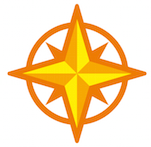 (Image credit: Yichao Zhao and Zhaoqing Wang/UCLA)
(Image credit: Yichao Zhao and Zhaoqing Wang/UCLA)
- Written by William D Snow
DNA Barcoding Advances Programmable Nanoparticle Self-Assembly
The Princeton University Department of Chemistry’s Yang Lab publishes research on the first sorting technology that distinguishes nanoparticles through the mechanism of Watson-Crick digital recognition, thus enabling a new range of molecule-like building blocks.
The lab accomplished this feat by exploiting DNA’s programming language—its ability to selectively associate with and recognize complementary sequences—through a process called DNA barcoding. The technique allows for the assembly of complex static and dynamic structures with predictable valency-defined nanoparticles.
“What is conceptually new and interesting here is that we could use that programmable code to actually separate these nanoparticles out by the number of DNA molecules attached,” said Nyssa Emerson, a postdoctoral associate and first author on the research paper. “We can change the letters of that code, and that tells us what DNA molecule will react with what other DNA molecule. There’s really not anything else that is this programmable and easily made.”
The research results are published in this article.
Read the full article at Princeton News.
The technology is available on this Princeton OTL TechnologyPublisher page.
Visible Legacy Comment
“Haw’s lab is interested in developing novel single-molecule spectroscopy methods to better understand complex biological environments,” said Princeton researcher Yasmine Eichbaum, now a clinical research coordinator at the University of California, San Francisco. “One aspect of this project was to design and characterize plasmonic nanostructures that could act as biosensors. By creating a robust separatory method, Nyssa provided the foundation for this research topic because this method allows one to design highly predictable structures with gold nanoparticles of various sizes.” Tech Scouts interested in biosensors and precision medicine might look more closely at this technology starting with the widget below. Click through the "Princeton University OTL" node (blue) to find all Princeton technologies.
Additional Info
-
Navigator:
 Explore the map in Navigator
Explore the map in Navigator - Widget:
- Caption: Princeton Yang Lab: DNA Valency Sorting Chromatography for Separating Large Solutes
Related items
- The future of health care is in our cells
- Federal funding will help WSU professor develop technology to recover rare earth elements
- Unlocking the brain: Peptide-guided nanoparticles deliver mRNA to neurons
- Scientists Get to the Bottom of COVID’s Worst Pediatric Complication
- WSU-inspired national gene-editing task force begins work
